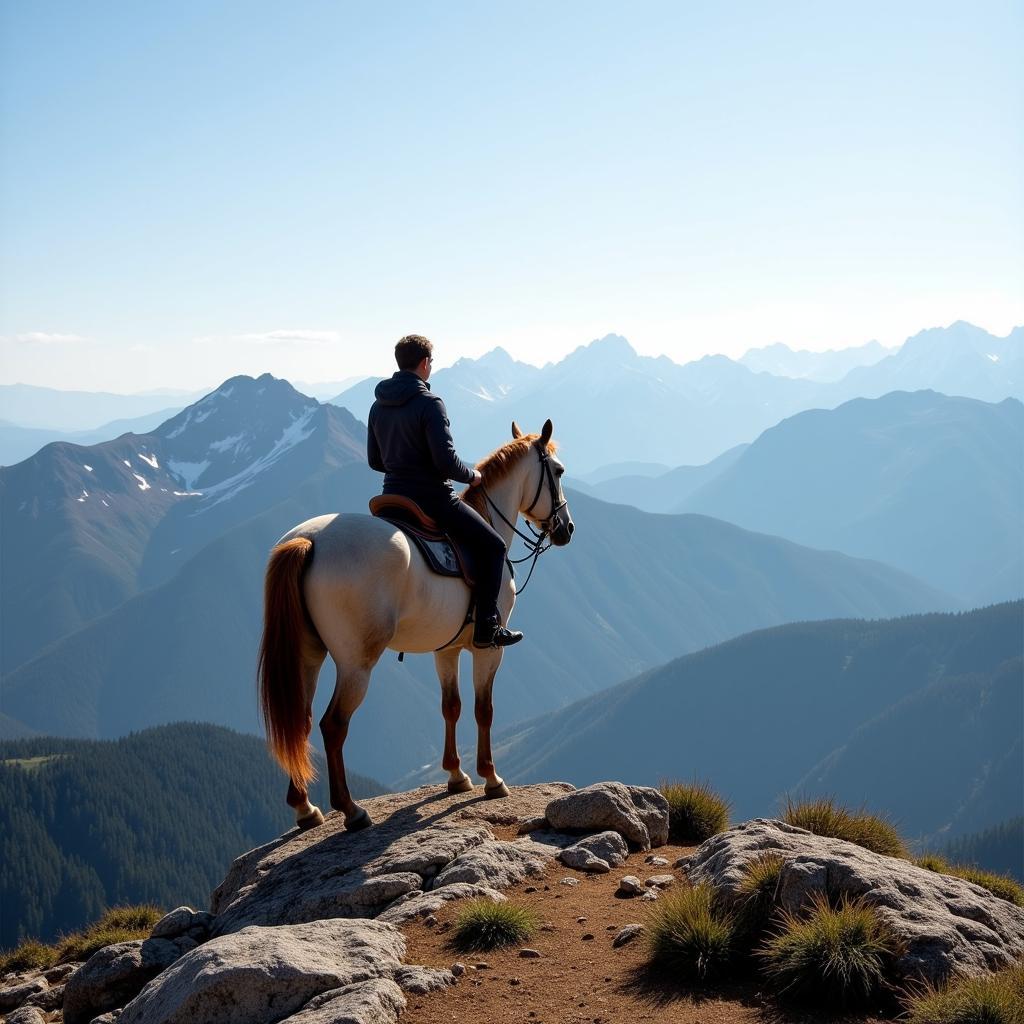Summit For Horses encompasses a wide range of meanings, from reaching peak performance to tackling challenging terrain. Whether you’re aiming for competitive success or simply enjoying trail rides in the mountains, understanding the specific needs of your horse at higher altitudes is crucial for their well-being and safety.
Reaching New Heights: Understanding the “Summit for Horses” Concept
“Summit for horses” isn’t just about physical elevation; it’s also about achieving optimal health and performance. This guide delves into various aspects of this concept, covering everything from high-altitude acclimatization to specialized training for mountain riding. We’ll explore how to prepare your horse for the challenges of a summit, ensuring they remain healthy, happy, and perform at their best. We will also discuss the importance of proper nutrition, gear, and first aid for horses in mountainous environments.
Preparing Your Horse for a High-Altitude Summit
Taking your horse to higher altitudes requires careful planning and preparation. Just like humans, horses need time to adjust to the lower oxygen levels and changing atmospheric pressure. This process, known as acclimatization, is vital for preventing altitude sickness. A gradual ascent is key, allowing your horse’s body to adapt slowly.
- Acclimatization: Start with shorter rides at lower elevations and gradually increase the altitude and duration over several days or even weeks.
- Hydration: Encourage your horse to drink plenty of water, as dehydration can exacerbate altitude sickness. Offer electrolyte supplements if necessary.
- Nutrition: A high-energy diet is crucial at higher altitudes. Consider adding supplements to support respiratory and cardiovascular function.
- Monitoring: Keep a close eye on your horse for signs of altitude sickness, such as lethargy, coughing, and nasal discharge.
Essential Gear for Summiting with Your Horse
The right gear can make all the difference when riding in mountainous terrain. Specialized equipment can enhance your horse’s comfort, safety, and performance.
- Saddles: A well-fitting saddle designed for mountain riding is essential for both horse and rider comfort.
- Hoof Boots: Protect your horse’s hooves from sharp rocks and uneven terrain.
- First-Aid Kit: A comprehensive equine first-aid kit should be readily available for any emergencies.
- Navigation Tools: GPS devices and maps are vital for navigating unfamiliar trails.
Training Your Horse for Mountain Riding
Mountain riding presents unique challenges, requiring specific training to prepare your horse for the demands of steep inclines, rocky paths, and changing weather conditions.
- Conditioning: Build your horse’s strength and endurance through regular exercise.
- Desensitization: Expose your horse to a variety of terrains and obstacles to build confidence.
- Footwork: Train your horse to navigate challenging footing, including rocks, logs, and water crossings.
 Horse undergoing mountain riding training, navigating rocky terrain and obstacles.
Horse undergoing mountain riding training, navigating rocky terrain and obstacles.
“Proper training is the cornerstone of successful mountain riding. A well-prepared horse is a confident horse,” says renowned equine trainer, Amelia Carter, DVM.
Safety First: Recognizing and Responding to Altitude Sickness in Horses
Altitude sickness can be a serious concern for horses at higher elevations. Recognizing the signs early and taking appropriate action is crucial.
- Symptoms: Watch for lethargy, loss of appetite, rapid breathing, and nasal discharge.
- Treatment: If you suspect altitude sickness, descend to a lower altitude immediately and consult a veterinarian.
“Early detection and prompt treatment are vital when dealing with altitude sickness in horses. Don’t hesitate to seek professional help,” advises Dr. John Riley, an experienced equine veterinarian specializing in high-altitude medicine.
Conclusion: Reaching the Summit Safely and Successfully
Reaching the summit with your horse can be a rewarding experience. By understanding the unique challenges of high-altitude riding and taking the necessary precautions, you can ensure a safe and enjoyable adventure for both you and your equine companion. Remember to prioritize acclimatization, proper gear, specialized training, and vigilant monitoring.
 Horse and rider reaching a mountain summit, showcasing a successful high-altitude ride.
Horse and rider reaching a mountain summit, showcasing a successful high-altitude ride.
“Summiting with your horse is more than just reaching the top; it’s about the journey and the bond you share,” reflects accomplished equestrian, Sarah Miller.
FAQs
- How long does it take for a horse to acclimatize to high altitude?
- What are the common signs of altitude sickness in horses?
- What should I include in my equine first-aid kit for mountain riding?
- What type of saddle is best for mountain riding?
- How can I improve my horse’s footwork for navigating challenging terrain?
- What are some tips for choosing the right hoof boots for mountain riding?
- What kind of nutrition is essential for horses at higher altitudes?
For further assistance, contact us at Phone: 0772127271, Email: [email protected] Or visit us at: QGM2+WX2, Vị Trung, Vị Thuỷ, Hậu Giang, Việt Nam. We have a 24/7 customer service team.